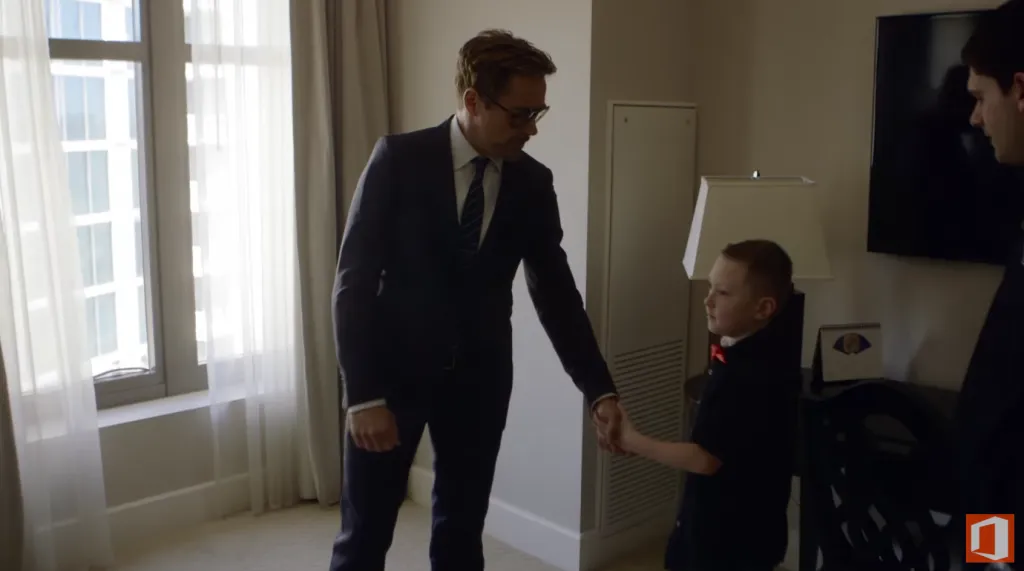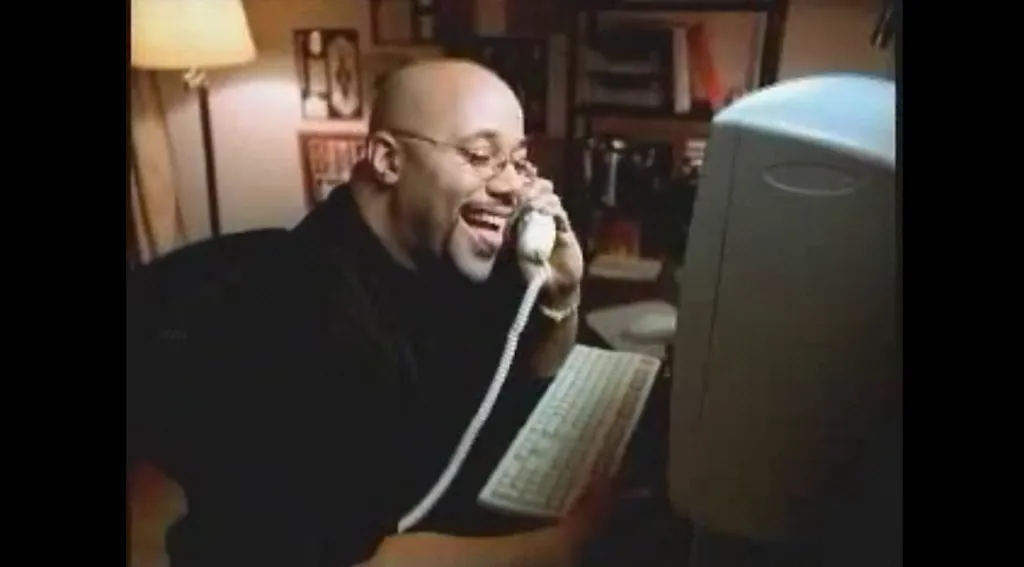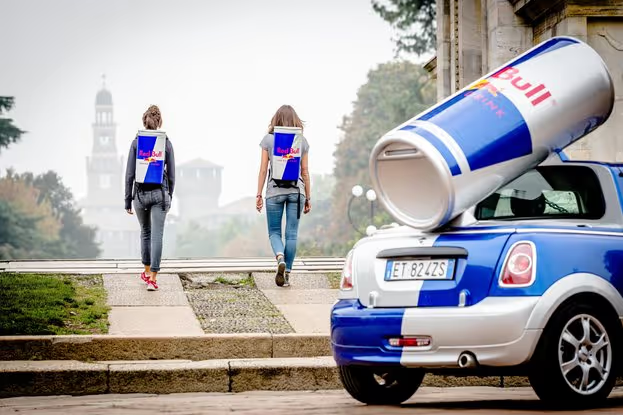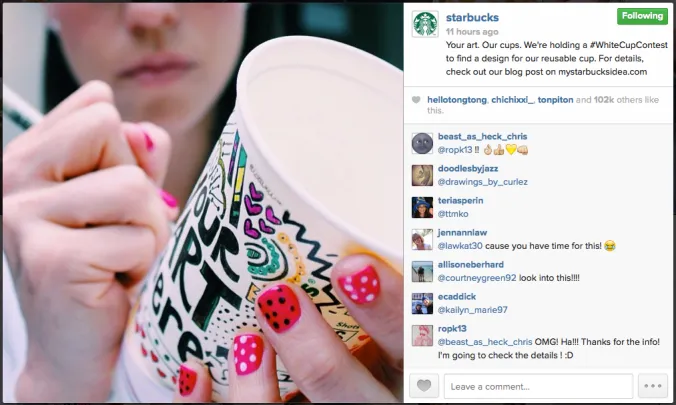What is Word of Mouth Marketing?
If you’ve been to a National Park, you know Smokey the Bear. With the classic slogan “Only you can prevent forest fires.” posted throughout the great outdoors. An earnest brown bear in a wide-brim hat holds a shovel in one paw and points a finger with the other. The message is clear: even in this huge wilderness, you can make an impact.
Just like you can prevent forest fires, marketers can ignite massive conversations with word of mouth marketing. Why is word of mouth marketing important? Because being able to create conversations around your brand is the ultimate goal of your marketing strategy. The power of word of mouth relies on the fact that humans are already social creatures - we will talk.
Today, we’ll dive deep into why word of mouth marketing is increasing in popularity and how to drive results from the strategy. A recent study from the American Marketing Association finds that 64% of marketing executives believe word of mouth is the most effective form of marketing - yet only 6% say they've mastered it.
Assisting in this discussion will be examples from five leading brands who are winning with their word of mouth marketing campaigns. Once you’ve read today’s guide, you’ll be able to put the piece together a word of mouth marketing strategy that creates a truly viral level of customer engagement.
What is Word of Mouth Marketing?
Word of mouth marketing is the process of encouraging authentic brand conversations through customers and influencers.
Similar to starting a fire, word of mouth marketing is a strategy that aims to spark a wave of brand engagement, be it in the form of referral visits, first-time purchases, customer engagement, website traffic, social sharing or mobile app downloads. The most effective word of mouth campaigns go viral. When ignited by a targeted offer, engaged customers share it so enthusiastically that it attracts new users in an exponential fashion.
- 74% of consumers identify word-of-mouth as a key influencer in their purchasing decision. -- Ogilvy
- 88% of people trust online reviews written by other consumers as much as they trust recommendations from personal contacts. -- BrightLocal
How Does Word of Mouth Marketing Work?
Simply create something worth talking about. Then guide your audience to talk about it.
If I started a fire, do I need to tell you to gather around it? No. You’d do that naturally. People love to engage another around common interests and share interesting things with each other. It’s the foundational aspect of our social structure.
Whether it’s a funny video, a valuable piece of content, or an offer from a product or service worth knowing about - word is mouth is basic form of communication. The trick is making these branded topics authentic to your users and irresistibly shareable. If you succeed in this, the effect is more word of mouth and more audience engagement, both factors which fuel further revenue growth.
What makes for effective word of mouth marketing?
Jonah Berger, Professor of Marketing at Wharton, cites three factors:
#1 Emotion
Berger’s studies, published in his book Contagious: Why Things Catch On, found that the strength not the type of emotion is what creates sharing behavior. Whether positive or negative, emotional responses are the key to any word of mouth initiative.

(Source)
For example, the “United Breaks Guitars” video came out and accumulated a million views in four days. United stock dropped 10% from this comic-tragic spoof. And when Microsoft had Robert Downey Jr. deliver a real bionic arm to a kid in need, viewers rewarded the deeply caring video with over 2,000,000 views.
#2 Social Currency
“Talking about remarkable things provides social currency,” says Berger. Yes, we share to connect. But also to feel good about ourselves by reaffirming what we believe is important, like holding up a mirror to our lives.
So what does your audience value? By finding what Berger calls the “inner remarkability” of something, we can use that to create positive word of mouth activity. After all, who wants to listen to a boring story. Even if you’re not showcasing awe-inspiring products like Apple, practical products or services all have something worth talking about in an interesting way.
#3 Triggers
“Triggers are the foundation of word of mouth and contagiousness,” writes Berger.
Triggers are a mechanism that reminds us of something else - even when we don’t see an advertisement in front of us. For example, many of us will always associate (and cringe from) the phrase “Wassup!” with Budweiser, no thanks to that 1999 Super Bowl ad. If you’re a beer drinker, no doubt that residual association will encourage you to buy Bud in the future.

(Source)
But if content is king, context is the key. Rather than simple catch phrases, marketers are better off looking for everyday situations their audience can be triggered. For example, Berger points to Kitkat being linked to taking coffee breaks. Since coffee drinkers are die-hard, associating a trigger with chocolate will be a frequent and profitable reminder.
#4 Trust
As with all effective customer engagement strategies, trust is an essential factor. We know that people are 4x more likely to buy when referred by a friend. But even if they’re not buying, people trust what others have to say. It’s more efficient for us to learn from others experiences than suffer through the mistakes ourselves.
How can brands gain trust from potential customers?
Utilizing user-generated content in word of mouth marketing is essential for creating brand trust and social proof to get the desired action. We can encourage user-generated content with targeted campaigns that ask customers at the right time to make a referral, leave a review, share a branded photo, etc..
This is a form of word of mouth your brand can freely employ to engage others. If your audience sees a positive review of your service, they'll be more likely to buy. When they read a real customer testimonial, they can imagine their own success with your brand. This is why user-generated content helps build brand trust and promote further word of mouth.
5 Ways to Build a Word of Mouth Marketing Strategy
The key to word of mouth marketing is identifying what’s remarkable about a brand that will generate buzz and then fan the flames. Look to where your brand interacts with consumers and leverage various aspects of that relationship to create something worth talking about. According to WOM marketing guru, Geno Church, three different motivations spark conversation around brands:
- Functional: Users engage in practical conversations in order to get information and better operate in the world around them.
- Social: Users engage with brands to express their individuality, boost their reputation, and gain peer recognition.
- Emotional: Users engage when their strong emotions are tapped.
Each brand applies these motivations differently, depending upon their audience and offering. Below we've highlighted five leading brands using word of mouth marketing.
#1 Leverage Influencers

(Source)
Who can fan the flames more than an influencer with a huge following? Consumers trust third-party individuals, so pairing with an audience-appropriate influencer can lead to explosive word of mouth success. When Superdry sent David Beckham a few pieces, it was definitely not a sure thing. But the fashionable soccer star took to the jackets and started wearing them out - free of charge! Social media blew up.
This type of social word of mouth paid off huge and led to similar off-the-cuff campaigns with Kate Winslet, Justin Bieber, and Zac Efron. Then Superdry capitalized and launched a YouTube channel to maximize the buzz around these celebrity interactions. By encouraging customers to share across a new channel, Superdry expanded their multi-channel marketing strategy and increased engagement with their target audience.
#2 Tap into Real Emotions

(Source)
Whether it’s shock, awe, sadness, or empathy - your brand needs to appeal to human emotion for word of mouth success. Take TOMS for example: the buy-one, share-one model is hugely profitable because it enables customers to feel like they’re making a change in the world. Regardless of buying a $60 pair of shoes and giving a $2 gift, new and loyal customers get a serious emotional boost by donating to charity.
The buzz is built into the soul of the company. Every time users wear a pair, they’re advertising for the lifestyle and the brand’s positive message. When users are equipped with such an important sense of pride it's easier for brands to encourage word of mouth activity like referrals, reviews, and social sharing. When doing good is on the line, people are eager to spread the word any way they can.
#3 Involve Established Communities

(Source)
Red Bull knows they can always turn to the extreme sports community for a good jolt of word of mouth. So the beverage brand makes itself available to this audience through a variety of high-profile events, music concerts, on-campus college events, by circulating with Red Bull cars and giving out free samples.
By being available and interactive with consumers, they can’t help but spread the word. A remarkable car? Check. Funny backpacks? Yep. Red Bull knows that influencers will drink their beverage and spread the message, but also makes sure to appeal to their customer base in a fun and engaging way.
#4 Start Conversations Around Customer Service

(Source)
Customer service interactions are always going to be an important area to focus on and encourage word of mouth. If you’re like Starbucks, you’re always exceeding customer service expectations and netting huge word of mouth as a result.
Starbucks has always maintained a premium product, ever since 1971 when it began importing Italian coffee to the United States. An excellent product with a compelling atmosphere, which the brand grew into an internationally recognized fixture with stimulating drinks available across the globe.
From multiple social media marketing campaigns like “Meet Me at Starbucks” to the new Starbucks app, customer engagement has always been a cornerstone of their brand strategy.
We see Starbucks leveraging its product design for the White Cup Contest and Christmas time means #RedCups. Plus, there’s always funny moments to be shared with misspelled names on cups. These are provocative ways to kickstart word of mouth sharing from their target audience. This also gives the brand a unique, non-corporate feel worth talking about.
#5 Make Leaving Reviews Easy

(Source)
Casper knows people love to comment on YouTube videos. So when the mattress company initiated an unboxing campaign for users filming themselves setting up their new mattress and posting it to YouTube, the responses came flooding in.
Not only did onlookers get a taste of the ease of use and a direct testimonial about the cost (the two best features of Casper), people were compelled to comment and leave their own experiences. Plus, viewers could click a link for the full written review.
You want to equip your audience with the means to leave feedback while giving them something positive to talk about. Casper was able to showcase their disruptive product while collecting quality user-generated content and social engagement.
Last Words
Word of mouth marketing is like making a campfire: spark a conversation in the right way and you'll see customers gather around your brand. Your challenge as a marketer will be to create a meaningful dialogue with your customers and encourage them to share it with their personal network. When building your word of mouth marketing strategy you should take advantage of consumer behavior principles of emotions, triggers, and social proof.
